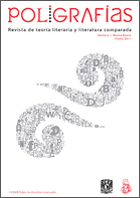Flaying the Image: the body of the anatomicatomical theatre in purview of Walter Benjamin’ s work on allegory and the baroque
Contenido principal del artículo
Resumen
The Baroque coincides with the development of a new art, a technique that learned how to read the confessions of the body, one that knew with precision how to bring the body out of its deadly silence and make it confess. This was not the tribunal of the Inquisition; this was the Anatomy theatre whose imprint bore the character of the scalpel. By laying out the canvas of the corpse, the amphitheatres showed a figure appearing upon the very same folds under which it disappeared. In the anatomy lesson, the act of reading coincided with an act of writing: the knife wrote as it read. The anatomist conceived a carte blanche, a blank map whose contours were traced on the selfsame edges of the parchment. For the first time—it seemed—the portent of veils gave straight answers. The magistri vulnerum—the masters of wounds—sought to undo the body in order to gaze at the nakedness of Eden; their most prized text being the silence written on Adam’s coat of skin. Such was the dream of the anatomist: to hold the image of man in one piece. Piece by piece.
Detalles del artículo
Cómo citar
Pardo-Domínguez, Y. (2012). Flaying the Image: the body of the anatomicatomical theatre in purview of Walter Benjamin’ s work on allegory and the baroque. Poligrafías. Revista De Teoría Literaria Y Literatura Comparada, (1). Recuperado a partir de https://revistas.unam.mx/index.php/poligrafias/article/view/32329
